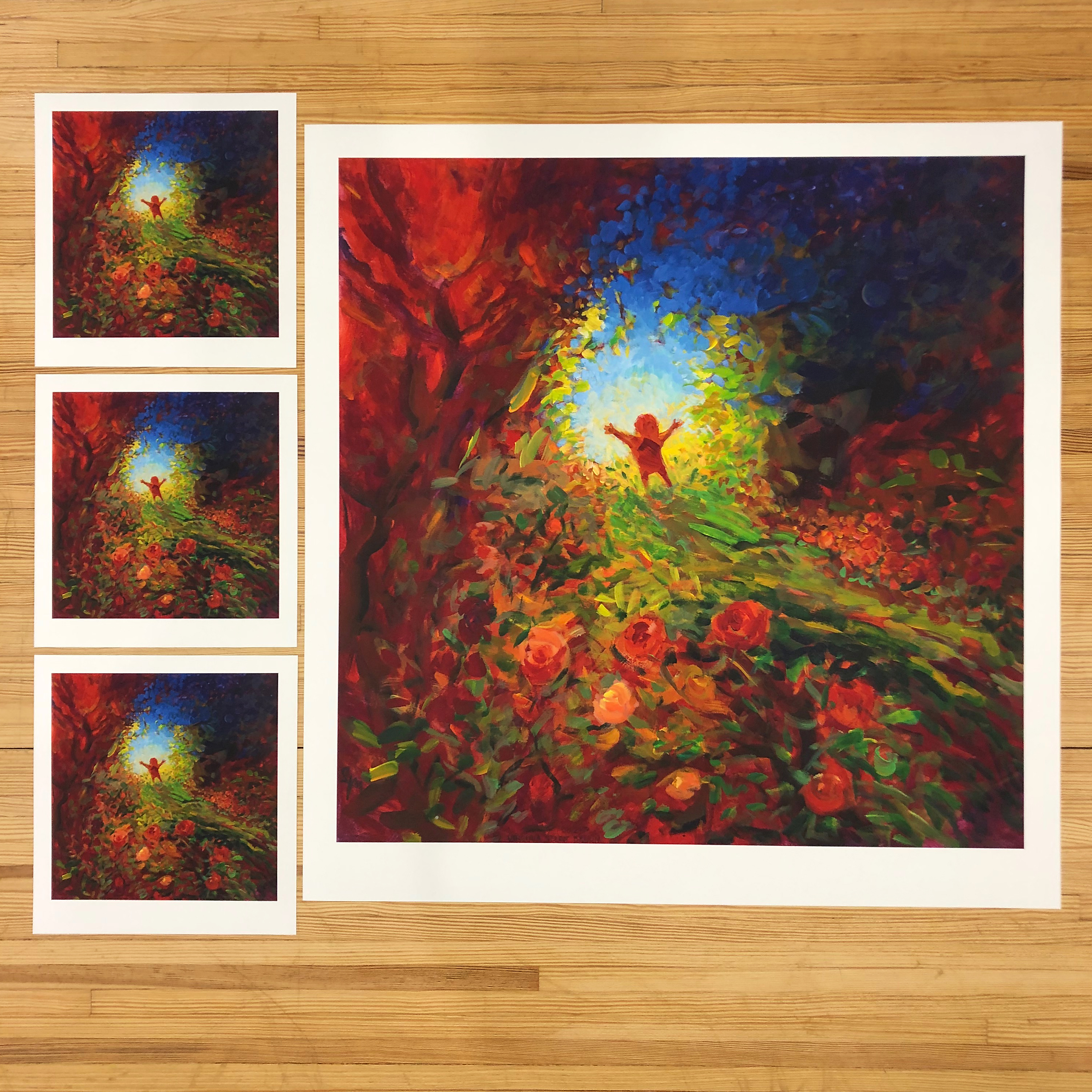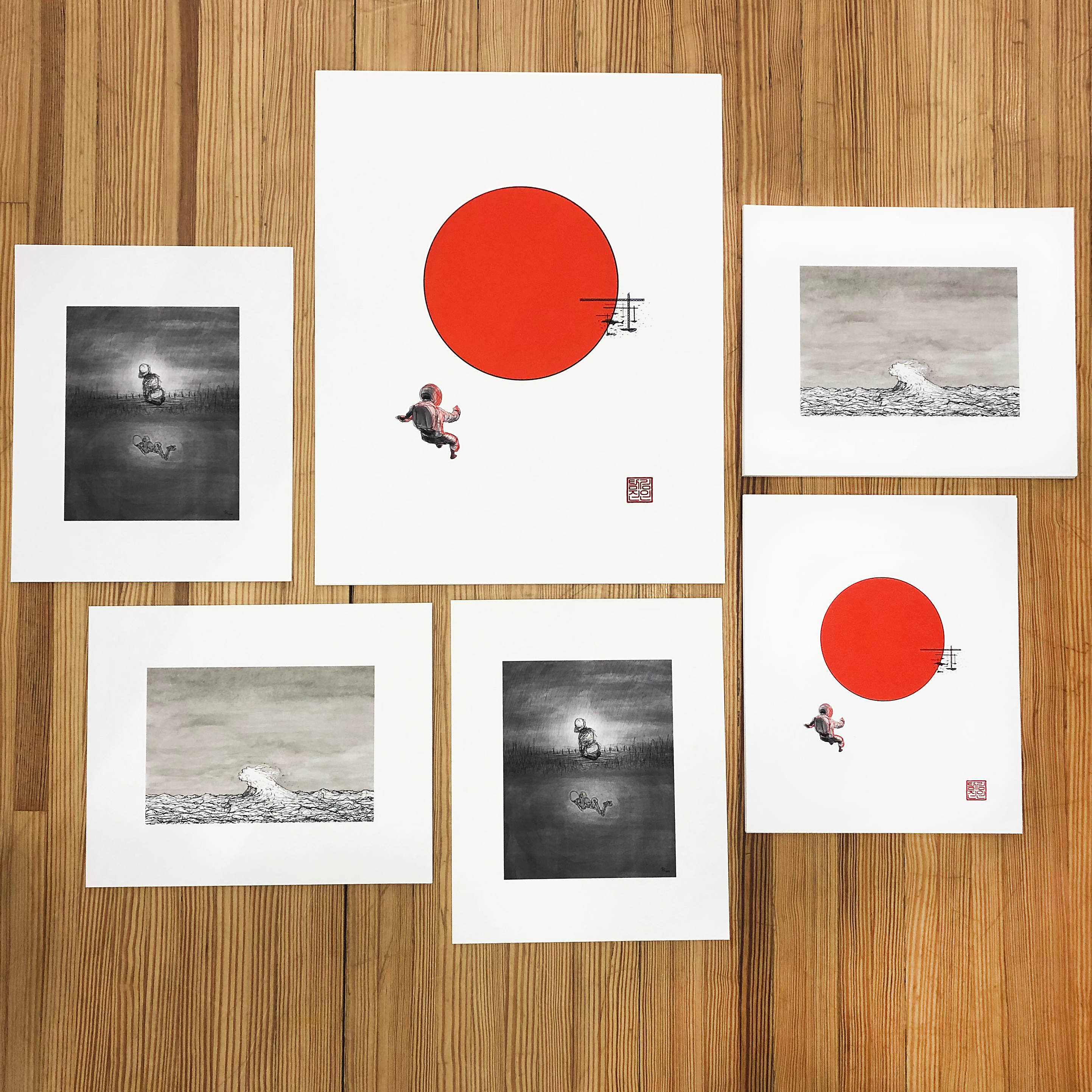Articles
How to Price Your Giclees
Don’t worry, a lot of artists struggle with this aspect of their business. Learning how to price giclees can seem difficult, but we’re here to help!
As many artists have experienced, pricing giclees incorrectly can leave you frustrated from lack of sales. The most important thing to realize is that not everyone’s giclees are going to be priced equally. If you price your giclee prints based on the correct factors from the beginning, you should have a lot more success. Two of the most important factors that affect your pricing are the quality of your giclees and your reputation as an artist. For this blog post we will assume you have the highest quality archival giclees which you are pricing for sale. If you’re just starting out with your art career and selling your work, you will probably ask less money than a career artist with an established reputation. Edition number and method of sale can also be taken into consideration when figuring out how to price your giclees.
One of the biggest challenges in figuring out how to price your giclees is that every artist is at a different skill level with varying reputations. We believe that our “1/3rd” method is the best way to price your giclees relative to your career level. This method considers the prices of your original works. A high quality archival giclee the same size as your original can be valued at 1/3rd of the cost of the original. So, if your original 18×24 painting sells for $3000 you can ask $1000 for each 18×24 giclee. We have artists that sell their giclees above and below the 1/3rd mark. If $1000 sounds like a lot, start selling at a lower price and work your way up to the $1000 asking price.
Another method that helps with pricing your giclees is a chart we have compiled through direct experience working with our clients, located at the bottom of this post. The numbers provided are averages for paper and canvas prints based on giclee size. Please keep in mind that this chart is supposed to help guide you with pricing, not dictate the value of your art. Some of the artists we work with price their giclees higher or even lower than some of the prices we have listed.
Multiple sizes of giclee prints. Artist: Peg Bruhn
It is also important to remember that your edition number will influence the price you put on your giclees. If you are limiting your edition to low numbers like 50, you can generally price the giclees higher than if you are limiting the edition to a higher number, such as 250. Usually an artist will raise the prices of the giclees over the life of an edition as more sell and there are fewer left in an edition.
Artist: Tom Kim
One last method of figuring out how to price your giclees is by considering the cost of production. You will decide how much profit you are happy making over what it cost to produce your giclees. This method works well for galleries, charities or non-profits wanting and expecting high volume sales. Usually a gallery, charity, or non-profit would print the whole or half of the edition up front to get the printing cost down to keep their retail prices low. This method of pricing would give an artist the most amount of exposure with less profit per print.
Whatever you do, do not set a high price and then lower that price down the road. Your clients want to see your work appreciate with time, not depreciate. You can always run a special or a sale at a special event if you must offer your prints lower than a previously displayed price. It’s also not a bad thing if a client haggles you down a little bit. Haggling with your clients may help them feel like they got a good deal buying your giclee.
Every artist is going to have different prices on their giclees. Make sure you position yourself correctly in the market by pricing your giclees based on the correct factors relating to your career level.
Suggested Retail Pricing Guidelines:
| Paper | Canvas | |||
| Giclee Print Size (inches) | Giclee Print Size (inches) | Low End Pricing | Median Pricing | Top End Pricing |
| 8 x 10 | 6 x 8 | $30 | $55 | $95+ |
| 9 x 12 | 7 x 9 | $40 | $60 | $100+ |
| 11 x 13 | 8 x 10 | $50 | $90 | $130+ |
| 13 x 22 | 9 x 12 | $70 | $130 | $180+ |
| 15 x 22 | 11 x 14 | $130 | $205 | $290+ |
| 17 x 22 | 12 x 16 | $140 | $220 | $325+ |
| 19 x 26 | 14 x 18 | $180 | $320 | $550+ |
| 22 x 30 | 16 x 20 | $260 | $410 | $650+ |
| 24 x 36 | 18 x 24 | $420 | $590 | $900+ |
| 24 x 48 | 20 x 24 | $510 | $660 | $1,010+ |
| 30 x 40 | 22 x 28 | $610 | $905 | $1,510+ |
| 30 x 44 | 24 x 30 | $710 | $1,200 | $1,800+ |
| 30 x 48 | 24 x 36 | $850 | $1,400 | $2,050+ |
| 36 x 48 | 24 x 48 | $950 | $1,600 | $2,350+ |
| 40 x 60 | 30 x 40 | $1,050 | $1,900 | $2,600+ |
| 44 x 70 | 36 x 48 | $1,250 | $2,350 | $3,450+ |
| 44 x 80 | 40 x 60 | $1,550 | $2,850 | $3,750+ |
| 44 x 90 | 40 x 72 | $2,050 | $3,350 | $4,350+ |
Further reading selection: Where to Sell Your Giclee Prints.


